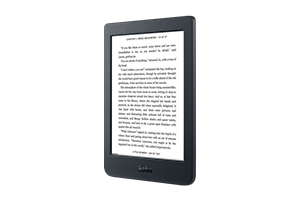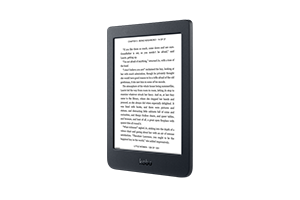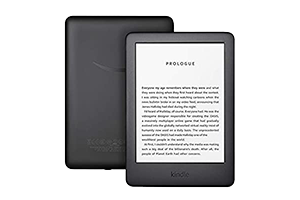It's no Amazon Kindle but it's Nia 'nuff.
Kobo Nia review
Kindle might be the most popular ereader on the market but Rakuten Kobo has always given it a good run for its money here in Australia. Kobo’s popularity is partly due to its more open ebook platform, which allows users to borrow ebooks from their local libraries, but also because they're damn good ereaders. Kindles and Kobos might look strikingly similar at a glance, but in reality, there are some significant differences between the two brands, even when comparing their basic, entry-level ereaders. We’ve already reviewed Amazon’s $139 Kindle (10th generation), so now it’s time to take a look at Rakuten’s budget ereader, the Kobo Nia.
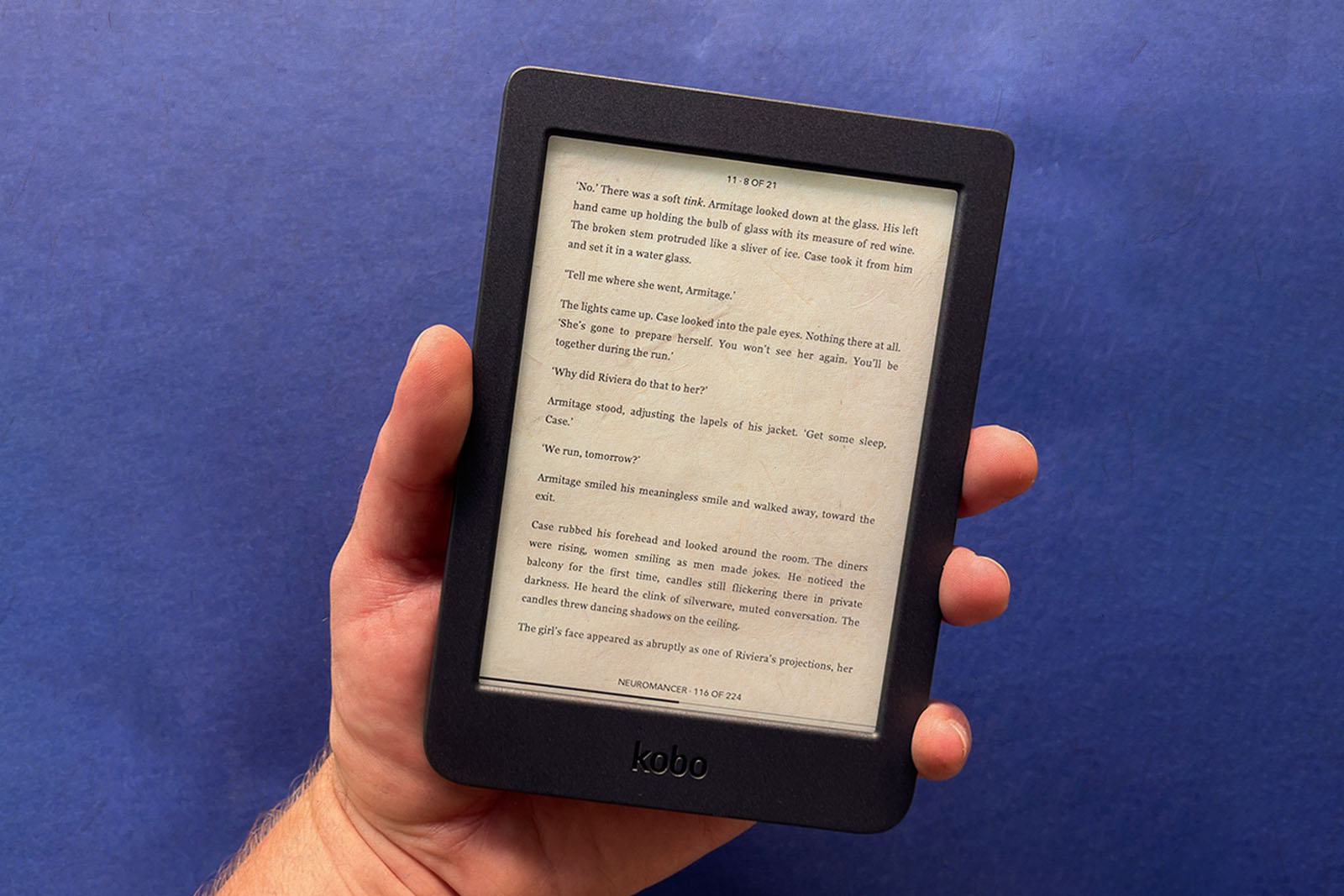
Quick verdict
In the US and UK, the Amazon Kindle's audiobook support makes it easier to recommend over the Kobo Nia but we don't have that option with the Australian Kindle models. Besides that, the 10th generation Kindle is a little snappier than the Kobo Nia but performance is where Kindle's reign of superiority ends. The Kobo Nia's multitude of small luxuries, like customisable touchscreen layouts, Pocket-reader support for articles, meaty reading stats, improved display and .epub file support make it the best budget ereader choice for Australians.
- Easily adjustable backlight
- Nice display with customisable control layout
- Reading stats
- Pocket articles
- Slow to refresh
- Typing is a chore
- Not waterproof
Kobo Nia price
The Kobo Nia costs $149 here in Australia, which is only $10 more than the Amazon Kindle. It’s available through Kobo’s website, Booktopia, JB HI-FI, Harvey Norman and more.
How much does the Kobo Nia cost in Australia
Spending an extra $30 or so with the Kobo Clara HD will get you better display resolution and adjustable warm light, but these aren’t exactly ground-breaking upgrades. The true upgrade in the Kobo range is the $268 Libra H2O, which, as the name implies, is waterproof in addition to sporting a larger display, page-turn buttons and more.
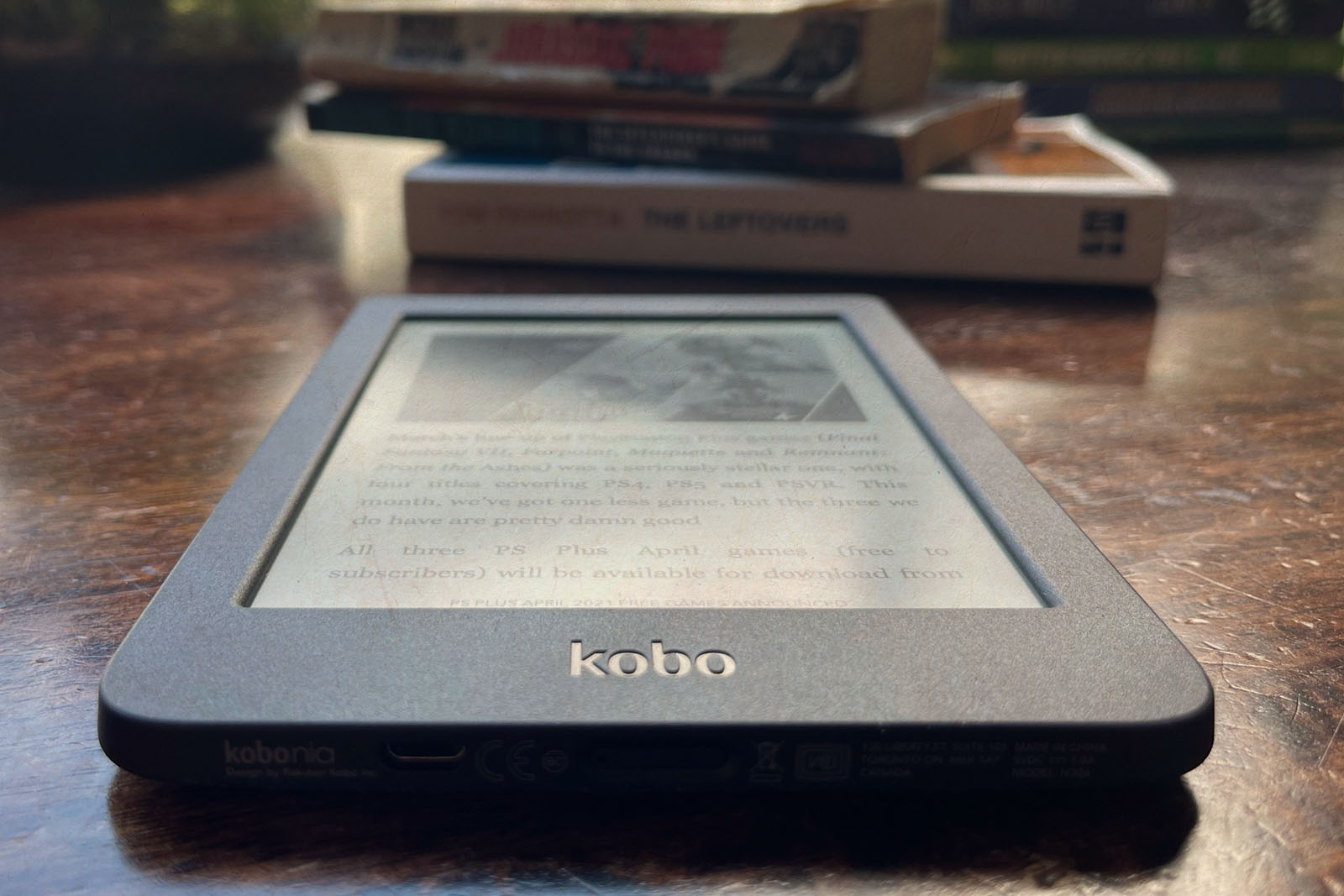
Kobo Nia vs Amazon Kindle
As both brands’ basic ereaders, the Kobo Nia and Amazon Kindle share many of the same headline features. Both sport 6-inch displays, backlights with adjustable brightness, 8GB of onboard storage, micro USB charging. They also share many of the same omissions, such as waterproofing and page turn buttons, features reserved for premium ereaders.
There are a few small differences between the technical specifications of each product. The battery in the Amazon Kindle is a little bit bigger (so it also weighs a little more), the Kobo Nia has slightly better resolution at 212ppi (pixels-per-inch) compared to the Kindle’s 167ppi display, and Kobo ereaders support more ebook formats, like the popular, library-supported .epub file type. Most of the differences are at a brand level, so you're better off comparing Kindle and Kobo before committing to either model.
Here’s a comparison of the Kobo Nia and the 10th generation Amazon Kindle.
Kobo Nia vs Amazon Kindle specs comparison
However, the most significant differences are in each model’s user experience. For example, the latest Amazon Kindle is a lot snappier and its touchscreen display is more responsive, which makes searching the Kindle store a lot easier than it is on the Kobo Nia. But the Kobo Nia also has a more convenient control layout with decent customisation options. For example, adjusting the brightness on the Kobo Nia is as simple as swiping up and down on the left side of the display, whereas Kindle only allows you to change the brightness in your settings. It’s only a few button presses away, but I prefer the convenience of Kobo’s system.
The Kobo Nia also lets you pick from four different control layouts, which is convenient for one-handed reading and left-handed users.
I’ve also enjoyed using the supported Pocket article reader app, which allows you to bookmark articles on the internet with a Chrome plug-in to read later on your Kobo.
Kobo Nia features and design
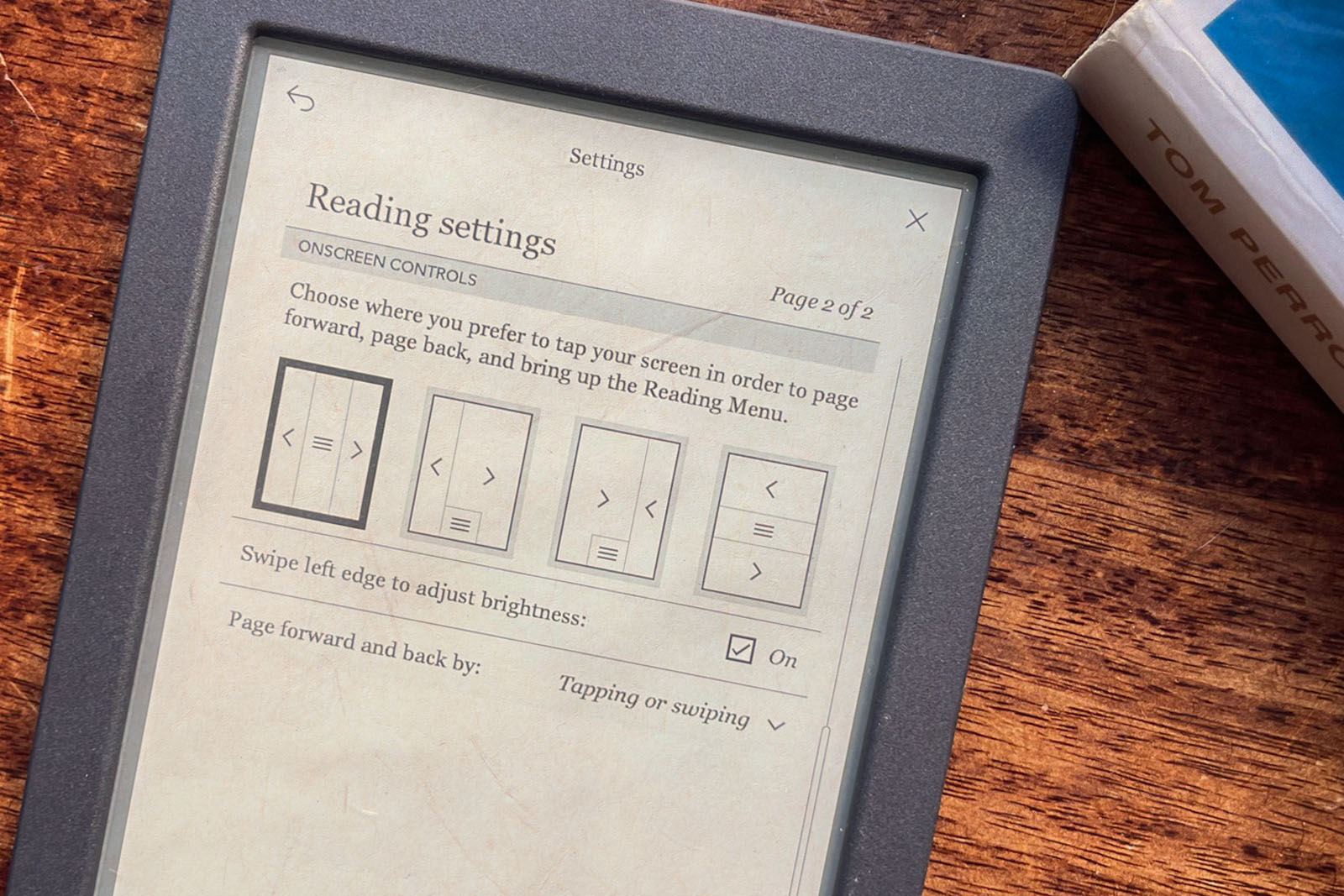
Like the Amazon Kindle, going cheap with Kobo no longer means sacrificing a backlight for nighttime reading. Going premium with both brands will get you auto-brightness and an adjustable “warm light,” which reduces eye strain in long reading sessions in the dark, but for a few chapters in a dimly lit room, the standard backlight is more than enough. What makes Kobo Nia’s implementation better is the intuitive controls to adjust brightness levels. It’s as simple as sliding your finger up and down the left edge of the touchscreen display, whereas the Kindle forces you to go into settings to adjust. It’s a simple but appreciated benefit of the Kobo Nia.
Speaking of convenience, the Kobo Nia allows you to change your touchscreen layout to best fit your needs. There are four options to choose from that allow you to optimise the touchscreen for the way you hold the Kobo. For example, I do a lot of one-handed reading with my left hand. My preferred layout is to have a small last page bar down the left, with 75% of the screen used for the next page, and a small centred menu section at the bottom of the display. This means I can easily reach for the next page command with my thumb. If you find you bump the display too often, you can also restrict page-turn commands to a swiping action. It’s a simple but vital customisation option that lets me tailor the reading experience to my own needs. Kindle doesn’t offer any sort of customisation at this level.
Get a grip
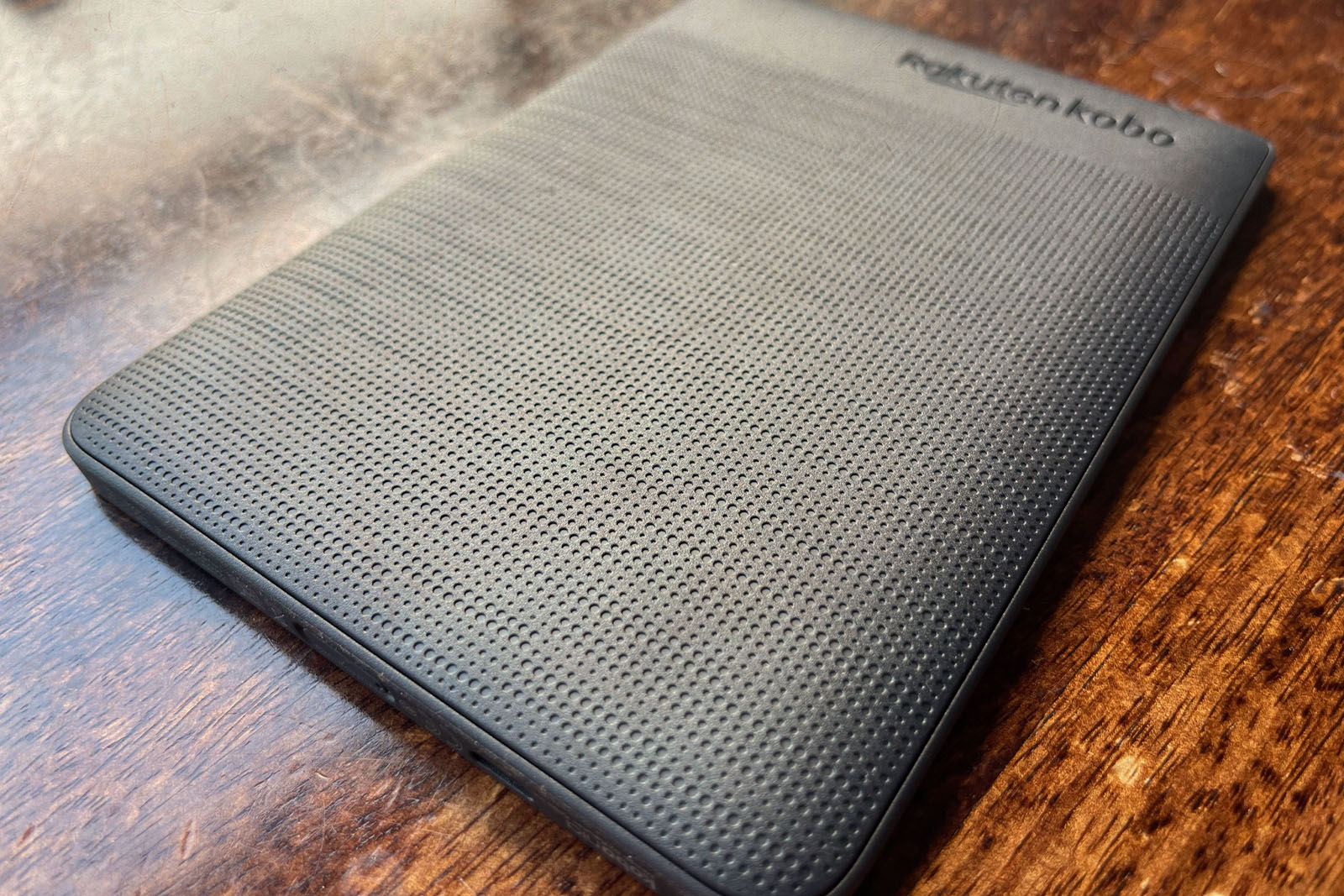
Another small but helpful detail is the textured plastic on the back of the Kobo Nia. It’s still a pretty slippery bit of tech but it provides a little more grip than Amazon Kindle’s smooth finish. This will only matter to you if you’ve copped your fair share of Kindles to the face in the dead of night, as I have.
The slow type
The one big benefit the latest Kindle has over the Kobo Nia is its responsiveness. You won’t be doing a lot of typing on the Kobo Nia but when you do, it’s like pulling teeth. There’s a gaping delay between pressing the Kobo Nia’s display and registering your input and the touchscreen can be painfully inaccurate—pressing Q and registering W, that sort of thing. It took me no fewer than four attempts to enter my Kobo password when I first set up the Nia. It will really test your patience.
I found the latest Amazon Kindle offered a more pleasant typing experience across the board. I could type full sentences at about the same rate I would fire off a text from the iPhone 12.
Reading on Kobo Nia
Great file format support
One of the biggest criticisms of the Amazon Kindle is its closed ecosystem of proprietary ebook formats. This could be seen as an anti-piracy measure as .epub files are readily available to download online but it’s also a way of ensuring that Amazon gets a cut of anything you buy for its ereaders. The problem is, that interferes with publicly available ebooks that can be borrowed from local libraries that use the OverDrive platform. Participating Australian libraries use the OverDrive platform to rent out ebooks to members in the .epub format. It’s a great system that Kindle users can’t access but with Kobo, it’s as simple as logging into OverDrive on your ereader and perusing your local libraries selection.
Besides that, there are other non-shady reasons you might want to download another book format. Maybe you purchased some .epub or .mobi books a while back on a different ereader, or maybe you’ve got some vintage .cbz/.cbr comic book files on your hard drive that you want to revisit. Maybe you just don’t want to throw money at Amazon. These are all valid reasons. You’re forking out for an ereader, you should be able to use it however you see fit.
Kobo Plus subscription in Australia?
The other argument sometimes made for Kindles is that it offers access to subscription services like Kindle Unlimited and Prime Reading. Prime Reading is a great benefit if you’re already an Amazon Prime subscriber, but overall, both offerings aren’t exactly tempting, but Kobo doesn’t offer a comparable subscription model here in Australia. Kindle Unlimited might not be worth its monthly subscription price but at least it offers collections, like every Harry Potter book and Amazon Classics.
Kobo Plus is a similar subscription service, but Rakuten only offers it in Canada and there’s no local equivalent.
Bookmark articles with Pocket
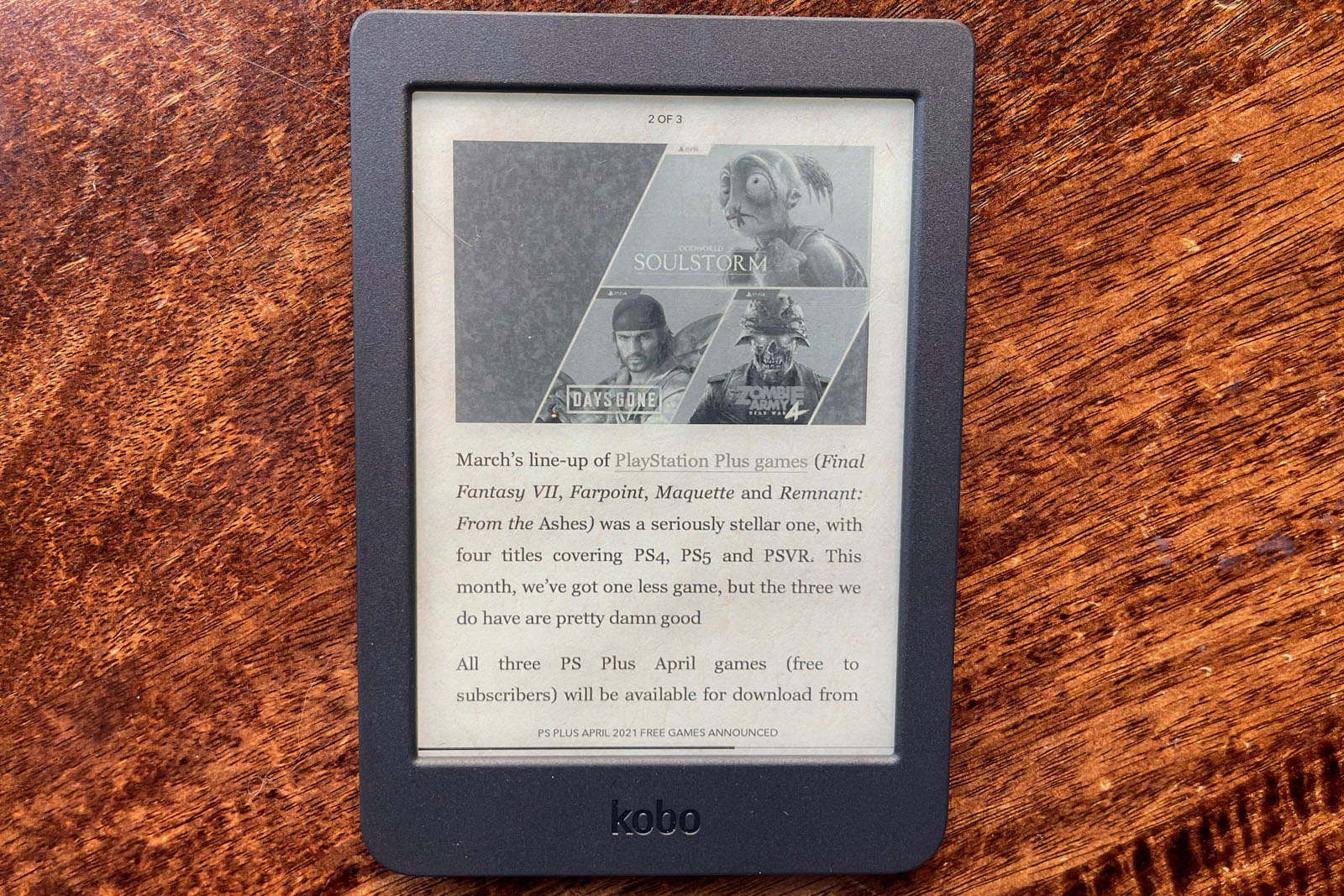
For me, the unsung hero of Kobo has been the Pocket app integration. Pocket reader is kind of like an advanced bookmarking service. I don’t know about you, but I’ve never used Google Chrome’s bookmark feature to flag articles and guides that I want to read at a later date. I use it for the tools and services I use every day. However, since I started reviewing the Kobo Nia, I have been bookmarking articles I want to read when I don’t have the time during the day.
Once you create a Pocket reader account, you can download the Pocket Google Chrome plug-in. Any long-form article you come across during the day can be bookmarked in your browser to read later on your Kobo device.
I’ve found myself pouring a bath with the ambition to finally finish Madame Bovary, only to find myself catching up with the articles I didn’t get the chance to read during the day. The internet is huge, and everything happens so much, but the combination of Pocket and Kobo has helped me stay up-to-date with the small corner of the web that’s relevant to me. Some people might see that as a distraction from dusting off the ebooks in their back catalogue but I've taken to reading articles on Kobo like a duck to water.
Reading stats
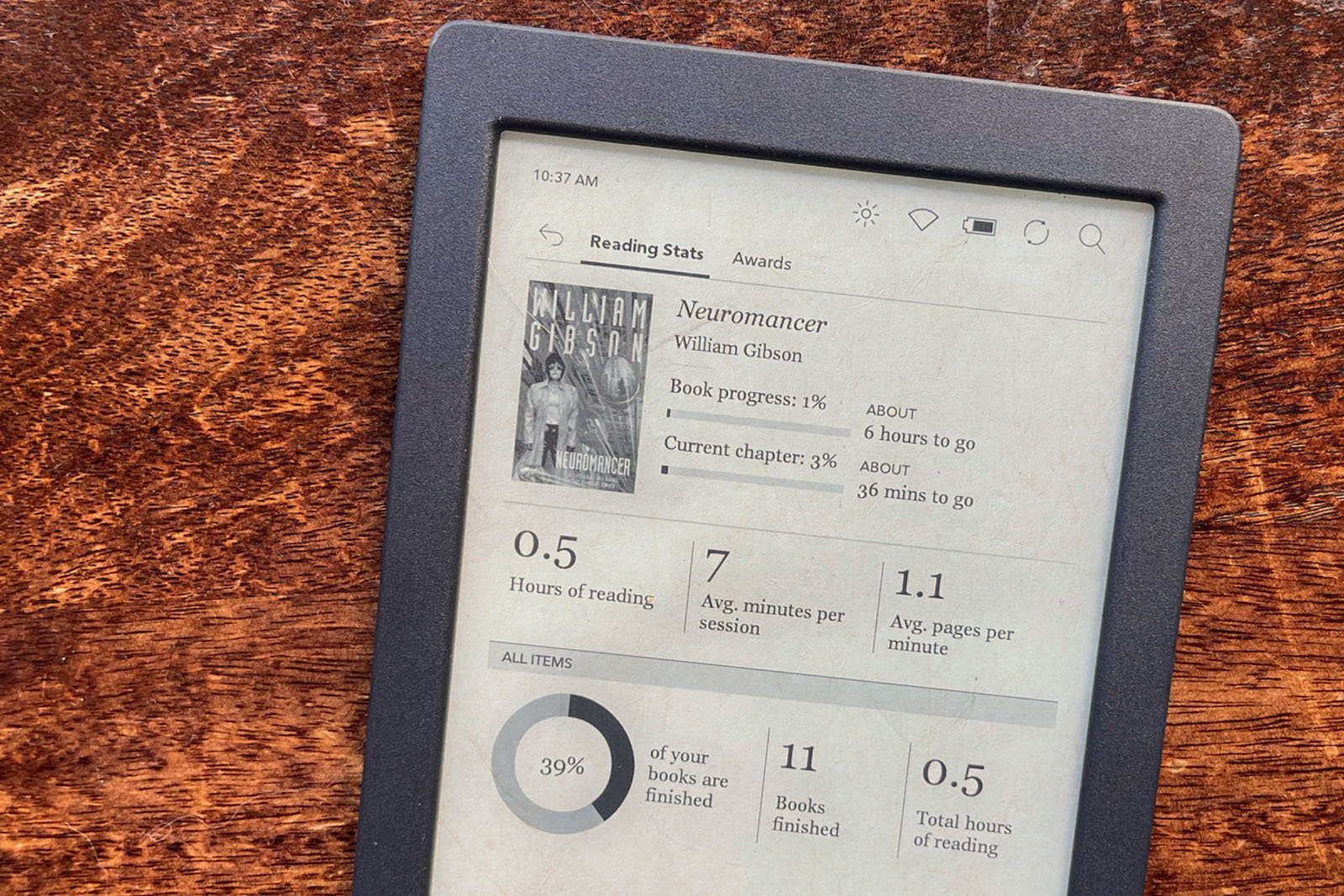
Another thing Kobo offers on its ereaders is reading stats. Amazon offers this too but you can only access it via the Kindle app on your smartphone or tablet. While reading a book, you can view how much you've read (in percentage) and minutes/hours left for the current chapter and book, as well as how many minutes to read the next chapter. I find that last one extra helpful when you’re weighing up whether to call it a night or soldier on.
In the Activity section, you’ll also find other interesting stats, like your average read time per session, average pages per minute, as well as how many books you haven’t finished (and how many you have). Maybe I’ve been spending too much time with the Apple Watch but there’s something about seeing an unclosed ring that fires me up to read more and burn through my back catalogue.
Is the Kobo Nia worth the price?
The Kobo Nia isn’t as snappy as the 10th generation Kindle and anyone used to a more responsive ereader might struggle with its sluggish performance. If you’re a long-time Kindle user, it will also be hard to break free of Amazon’s walled garden ecosystem of ebooks and you won’t be bringing your back catalogue over to Kobo. But if you’re not married to the Amazon platform, opting for the Kobo Nia will get you a suite of small luxuries, like more control scheme layouts, Pocket support for reading articles on your ereader and the ability to borrow ebooks from libraries that use OverDrive. If this is your first ereader and you’re looking for a low-cost device to get started, I’d recommend the Kobo Nia over the Amazon Kindle.
Related Articles





